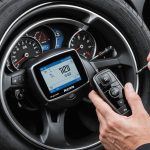Ultimate Guide to Ensuring Your Vehicle Meets Noise Regulations in Urban UK Areas
Understanding Noise Regulations for Vehicles
When it comes to driving in urban UK areas, adhering to noise regulations is crucial not only for compliance with the law but also for the well-being of the community and the environment. Noise pollution from vehicles can be a significant issue, affecting both road users and residents.
What are Noise Regulations for Vehicles?
Noise regulations for vehicles in the UK are designed to control and reduce noise pollution. These regulations are enforced under various acts, including the Environmental Protection Act 1990 and the Road Traffic Act 1988. The primary goal is to ensure that vehicles do not exceed specified noise levels, which are measured in decibels (dB)[5].
Also to discover : Transitioning smoothly: your essential guide to shifting from company cars to personal vehicles in the uk
Why are Noise Regulations Important?
Noise regulations are vital for several reasons:
- Safety: Excessive noise can be a distraction and pose a risk to both drivers and pedestrians.
- Health: Prolonged exposure to high noise levels can lead to health issues such as hearing loss and increased stress.
- Environment: Reducing noise pollution contributes to a more pleasant and sustainable urban environment[2].
Types of Vehicle Noise and Their Impact
Vehicle noise can be categorized into several types, each with its own impact on the environment and road users.
This might interest you : The ultimate handbook for choosing the ideal cargo van to meet your uk business needs
Engine Noise
Engine noise is one of the most common types of vehicle noise. It can be particularly problematic if the vehicle’s exhaust system is not properly maintained or if the engine is in poor condition. Regular maintenance, such as replacing mufflers and ensuring proper engine tuning, can significantly reduce engine noise.
Tire Noise
Tire noise is another significant contributor to vehicle noise pollution. The type of tires used and the condition of the road surface can greatly affect the level of noise generated. For instance, tires with a specific tread pattern designed for noise reduction can help minimize this type of noise.
Other Sources of Noise
Other sources of noise include horns, alarms, and auxiliary equipment like air conditioning and music systems. These can also contribute to overall noise levels and need to be controlled to comply with regulations.
How to Measure and Control Vehicle Noise
Measuring and controlling vehicle noise is a critical aspect of ensuring compliance with noise regulations.
Measurement Techniques
Noise levels are typically measured using sound level meters that quantify the sound pressure in decibels (dB). Here are some common measurement techniques:
- Static Testing: This involves measuring the noise level of a stationary vehicle, usually during an idle or full-throttle test.
- Dynamic Testing: This involves measuring the noise level while the vehicle is in motion.
Control Systems and Engineering
To control vehicle noise, various engineering solutions are employed:
- Mufflers and Exhaust Systems: Properly designed and maintained exhaust systems can significantly reduce engine noise.
- Soundproofing Materials: Using soundproofing materials in the vehicle’s interior can help reduce the noise level inside the vehicle.
- Tire Design: As mentioned earlier, tires with noise-reducing tread patterns can help minimize tire noise.
Compliance with Noise Standards
Compliance with noise standards is mandatory, and there are specific limits that vehicles must adhere to.
Noise Limits for Vehicles
In the UK, the noise limits for vehicles are as follows:
| Vehicle Type | Maximum Permitted Noise Level (dB) |
|---|---|
| Passenger Cars | 74 dB (stationary), 82 dB (in motion) |
| Goods Vehicles | 80 dB (stationary), 89 dB (in motion) |
| Motorcycles | 80 dB (stationary), 89 dB (in motion) |
Consequences of Non-Compliance
Failure to comply with noise regulations can result in penalties, including fines and even the seizure of the vehicle. For instance, if a vehicle exceeds the permitted noise levels, the owner may be issued a Fixed Penalty Notice or the case may be referred to the Procurator Fiscal[1].
Practical Tips for Reducing Vehicle Noise
Here are some practical tips to help reduce vehicle noise and ensure compliance with regulations:
- Regular Maintenance: Regularly check and maintain your vehicle’s exhaust system, tires, and other components to ensure they are in good condition.
- Use Noise-Reducing Tires: Opt for tires with noise-reducing tread patterns.
- Avoid Revving the Engine: Avoid revving the engine unnecessarily, as this can increase noise levels.
- Use Soundproofing Materials: Consider using soundproofing materials in your vehicle to reduce internal noise levels.
Innovative Solutions: 15-Minute Cities and Electric Vehicles
Innovative urban planning concepts and the adoption of electric vehicles can also play a significant role in reducing noise pollution.
15-Minute Cities
The concept of 15-minute cities, where all daily essentials are within a short walk or bike ride, can significantly reduce the need for vehicles and thus lower noise pollution. By promoting walking, cycling, and the use of public transport, these cities can create a quieter and more sustainable environment[2].
Electric Vehicles
Electric vehicles (EVs) produce no exhaust emissions and significantly reduce noise pollution compared to traditional petrol or diesel vehicles. By increasing the use of EVs and smart EV charging systems, cities can cut emissions, improve air quality, and reduce noise levels[2].
Community and Regulatory Support
Ensuring compliance with noise regulations often involves both community effort and regulatory support.
Reporting Noise Nuisances
If you are affected by excessive vehicle noise, you can report it to your local council. For example, in Glasgow, you can contact the noise officers who are available seven nights a week to address noise complaints[1].
Regulatory Enforcement
Local councils have the power to enforce noise regulations. They can issue Warning Notices, Fixed Penalty Notices, and even seize noise-making equipment if necessary. Regulatory bodies work to ensure that noise levels are kept within acceptable limits, protecting both road users and residents[1][3][5].
Ensuring your vehicle meets noise regulations in urban UK areas is a multifaceted task that involves understanding the regulations, measuring and controlling noise levels, and complying with noise standards. By adopting practical tips, innovative solutions like 15-minute cities and electric vehicles, and leveraging community and regulatory support, we can create a quieter, safer, and more sustainable urban environment.
Key Takeaways
- Regular Maintenance: Keep your vehicle in good condition to reduce noise levels.
- Comply with Regulations: Adhere to the specified noise limits to avoid penalties.
- Innovative Solutions: Consider the benefits of 15-minute cities and electric vehicles.
- Community Support: Report noise nuisances and work with local councils to enforce noise regulations.
By working together, we can reduce noise pollution and create a better quality of life for everyone in urban areas.









